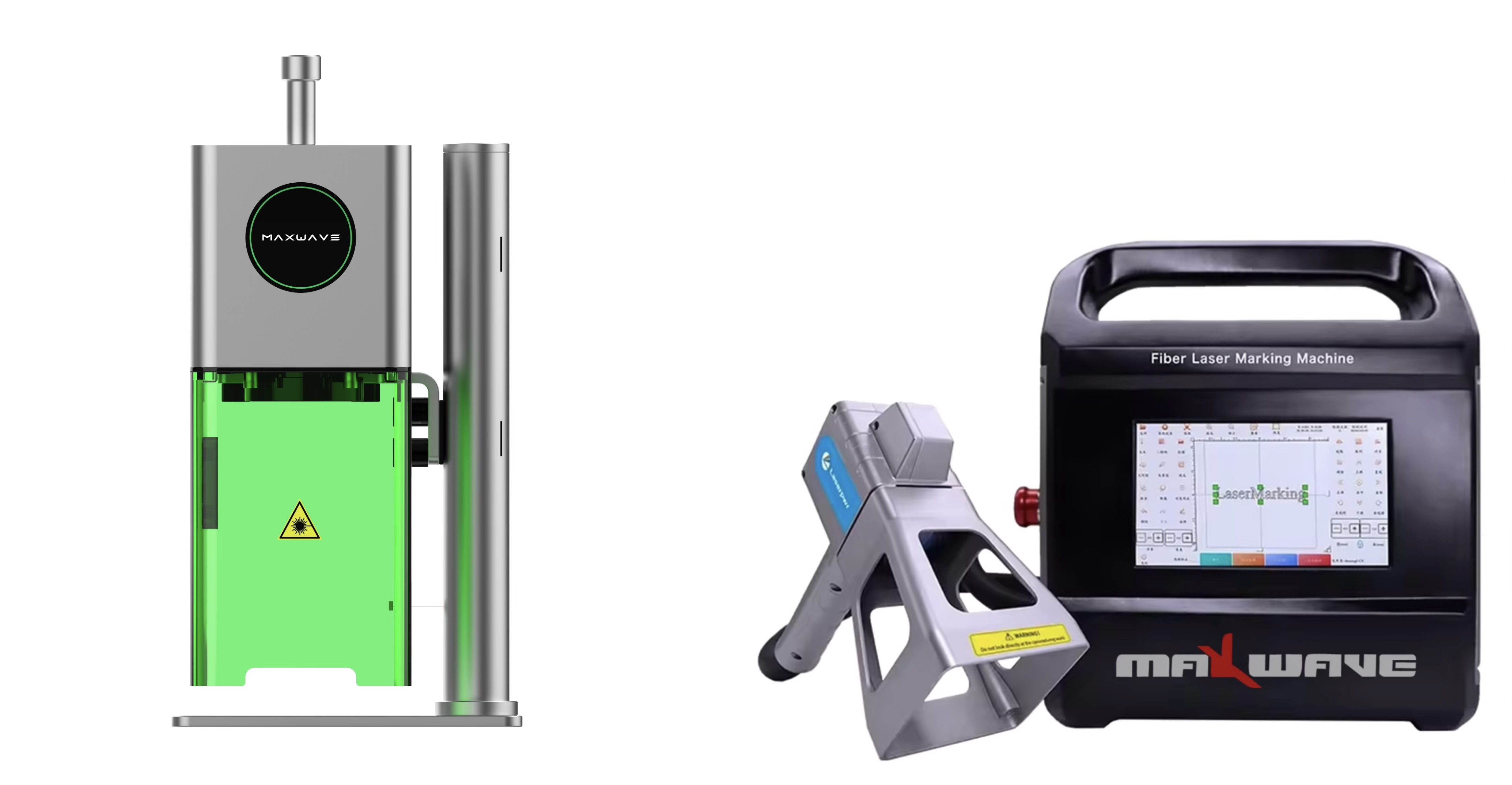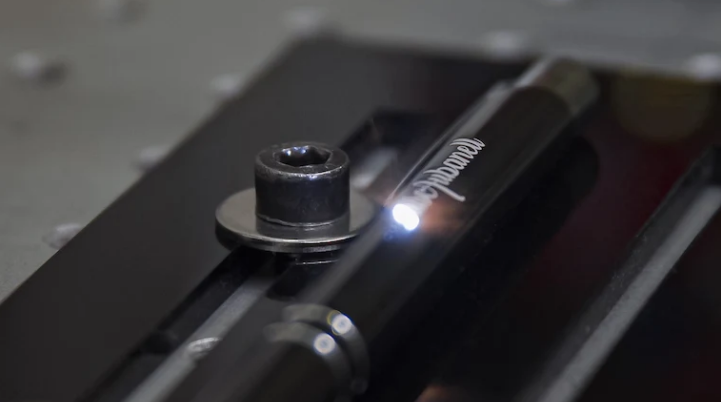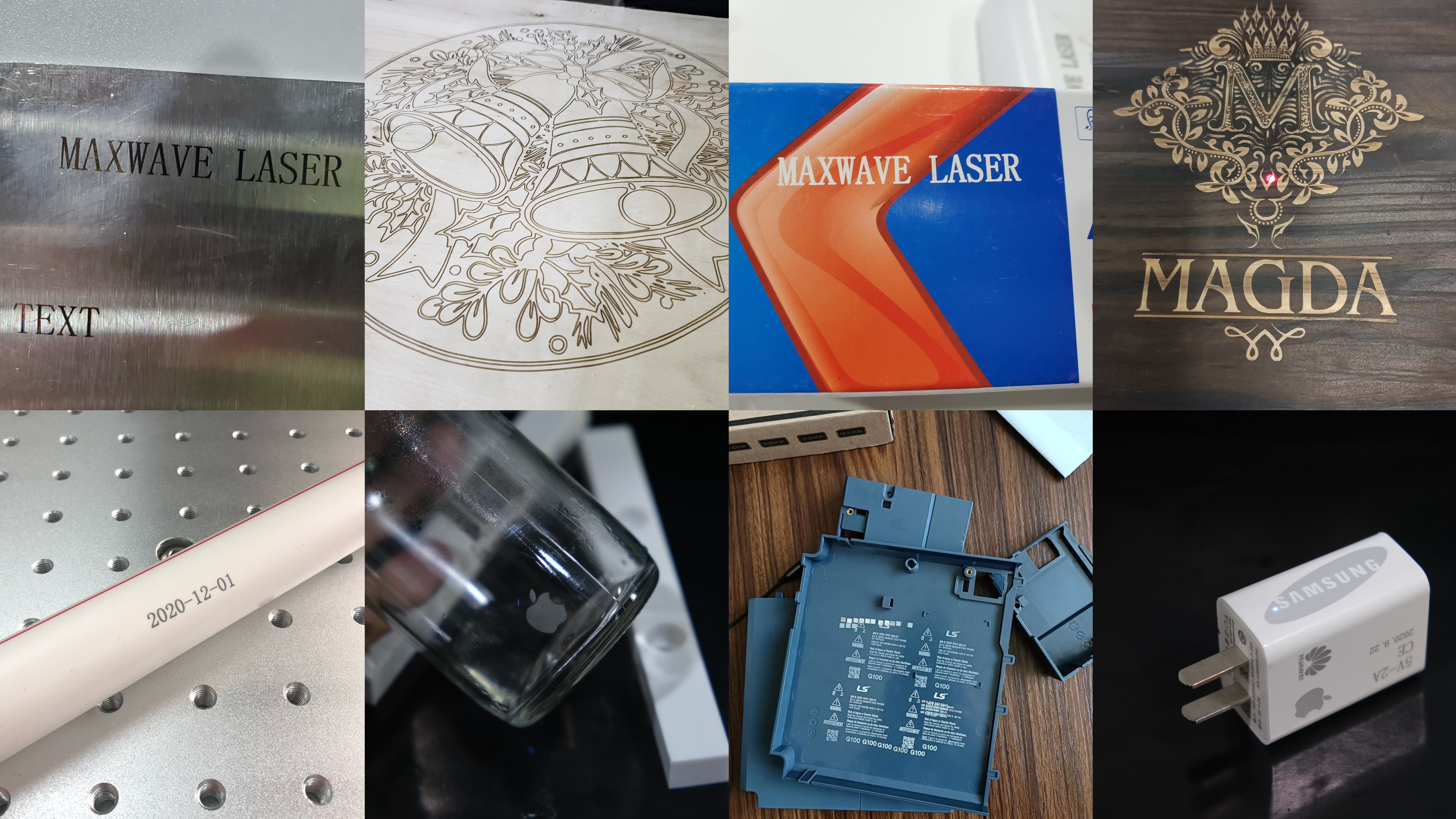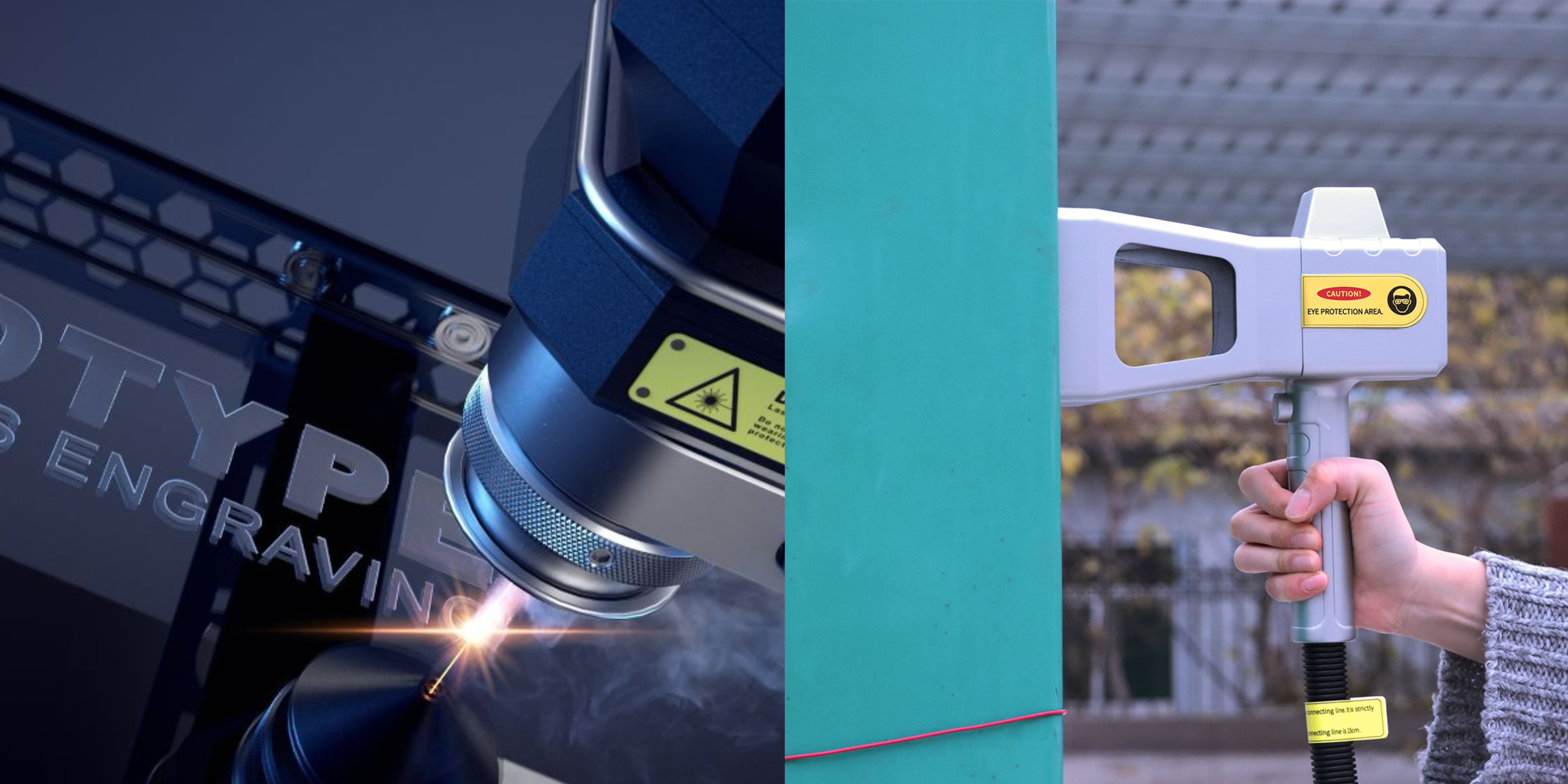In the fierce competition of modern manufacturing, how can businesses boost productivity, cut costs, and ensure high-quality, durable markings? Laser Marking vs. Silk Screen Printing—Which One Can Revolutionize Your Production? Many companies still rely on traditional silk screen printing, but did you know that laser marking can increase productivity by 300% while reducing manual labor?
With faster marking speeds, lower maintenance costs, and longer-lasting results, laser marking machine is quickly becoming the go-to solution for manufacturers looking to optimize efficiency. In this article, we’ll uncover the key differences between these two technologies and reveal why laser marking is the ultimate productivity game-changer!
Main Differences Between Laser Marking and Silk Screen Printing
| Aspect | Laser Marking | Silk Screen Printing |
|---|---|---|
| Process Comparison | Alters material with 0.002-inch precision. | Applies ink through a stencil, limited to 0.01-inch detail. |
| Equipment & Automation | Needs a laser machine; 90% automated. | Requires screens, squeegees, and inks; 80% manual. |
| Speed & Setup | Setup in 5–10 min, marking in 1–5 sec/item. | Setup in 30–90 min, printing takes minutes per item. |
| Material Compatibility | Works on 100+ materials (metals, plastics, glass, ceramics). | Limited to 3–5 materials (fabric, paper, some plastics). |
| Durability | Permanently withstands 1000°C heat, chemicals, and abrasion. | Fades after 50–100 washes or sun exposure. |
| Cost Efficiency | Setup $5K–$50K, running cost $0.01–$0.05/mark. | Setup $500–$2K, printing $0.10–$1/print. |
| Environmental Impact | 95% less waste, eco-friendly. | Produces toxic ink waste, high water use. |
| Customization | Instant design changes, 80% faster lead time. | New screens required per design, increasing cost and delay. |
–
Laser Marking Boosts Productivity
I’ve found that laser marking significantly enhances production efficiency, outperforming silk screen printing in speed, precision, and cost-effectiveness. With faster processing times, higher efficiency, and reduced operational costs, it’s a game-changer for companies looking to optimize their manufacturing workflow.
Faster Processing Speeds
Laser marking machine can process 1,000–3,000 parts per hour, whereas silk screen printing handles only 300–500 parts per hour. This translates to a 200–300% increase in output, significantly boosting production efficiency. With faster cycle times, reduced downtime, and minimal manual intervention, laser marking enables manufacturers to scale operations, meet higher demand, and reduce lead times—all while maintaining precision and consistency.
Quick Setup
Laser marking setup takes just 5–10 minutes, while silk screen printing requires 30–90 minutes to prepare screens and ink. This results in an 80% reduction in changeover time, allowing for faster transitions between production runs. With minimal setup delays, manufacturers can increase throughput, reduce idle time, and improve overall workflow efficiency, making laser marking an ideal choice for high-mix, low-volume production environments.
Better Automation
Laser marking machine seamlessly integrate with automated production lines, enabling continuous, high-speed marking without manual intervention. In contrast, silk screen printing requires manual loading and unloading, leading to more frequent disruptions and longer cycle times. By reducing human dependency and minimizing downtime, laser automation increases equipment uptime by 25–40%, allowing manufacturers to maximize throughput, maintain consistent quality, and reduce labor costs in large-scale production environments.
Superior Marking Quality
Laser marking achieves an impressive 99.9% first-pass yield, ensuring near-perfect quality with minimal defects. In comparison, silk screen printing delivers a 95–98% first-pass success rate, leaving a higher margin for errors. This 2–5% improvement in accuracy significantly reduces the need for rework, minimizes material waste, and enhances overall production efficiency. By maintaining consistent precision, laser marking helps manufacturers lower costs, improve product reliability, and streamline quality control processes.
More Flexible for Different Parts
A single laser system can mark various parts and designs without requiring tool changes, enabling seamless production adaptability. In contrast, screen printing demands new screens for each design, increasing setup time and limiting efficiency. This makes laser marking 30–50% more flexible, allowing manufacturers to switch between jobs faster, handle customized orders with ease, and reduce downtime associated with design changes.
Lower Operating Costs
Laser marking eliminates recurring supply costs since it requires no ink, screens, or consumable replacements. In contrast, silk screen printing incurs ongoing expenses for ink, screens, and maintenance. By switching to laser marking, companies reduce variable costs by 40–60% annually, leading to significant long-term savings while enhancing operational efficiency and sustainability.
Real-World Applications of Laser Marking Machines
Car Parts Maker: 350% More Output
I’ve seen a car parts maker switch from silk screen printing to laser marking for engine part serial numbers. Their output jumped by 350% thanks to: – No more 30-minute ink drying time per batch – No screen cleaning or setup when changing products – Easy marking on curved surfaces with perfect results
Electronics Firm: Better PCB Marking
When an electronics firm started using laser marking machine for circuit boards, I noticed these great results: – 275% more boards marked per hour – Error rates fell from 2% to 0.1% – Saved $150,000 yearly on labor and materials
Medical Tool Company: Faster, More Reliable Marking
I recommend laser marking for medical tools. One company I worked with achieved: – Speed boost from 100 to 400 units per hour – Sterilization-proof marks that last 10+ years – Money back in just 9 months, mostly from fewer recalls
Aircraft Parts Supplier: Better Materials Handling
An aircraft parts supplier I consulted switched to laser marking and gained: – 320% more output for small batches – Ability to mark tough materials like titanium alloys – Links to an automated inventory system for smoother work
Why Productivity Jumps
- No inks, screens, or cleaning chemicals needed.
- Switch jobs with a click – no physical tools to change.
- Perfect results every time – no worker mistakes.
- Much faster marking – just 1-3 seconds per part.
- Works on more materials and shapes.
When You’ll Get Your Money Back
- Small setups: 12-18 months
- Big factory systems: 6-9 months
I’ve found these real examples show 200-400% output gains when companies move from silk screen to laser marking. Based on my experience, no other method matches laser marking’s efficiency in factory settings.
300% Productivity Boost with Laser Marking Machines
Invest The Right Laser Marking Equipment
Choosing the right laser marking machine is crucial for maximizing productivity. Fiber lasers are ideal for marking metals, while CO₂ lasers are better suited for plastics and organic materials. Ensure the system is compatible with your production process to achieve seamless integration and optimal efficiency.
Optimize Workflow and Automation
Integrating a robotic conveyor system to deliver items directly to your marking station can significantly streamline your workflow. This automation reduces the need for manual handling, allowing for continuous, hands-free operation. By doing so, it can cut downtime between marking cycles by as much as 80%, resulting in faster transitions, increased throughput, and a more efficient production line. This solution not only improves productivity but also enhances overall operational efficiency by minimizing idle time and human error.
Train Your Team
Investing in laser marking technology and safety training is key to maximizing efficiency and reducing errors. Well-trained employees can boost productivity by 25-40% by operating systems optimally and troubleshooting issues. MaxWave’s latest laser marking machine is designed to be user-friendly, allowing even beginners to learn in just 10 minutes. The intuitive interface and easy-to-follow setup instructions make it accessible for all levels of experience, contributing to faster onboarding and reducing the learning curve. This results in not only higher efficiency but also a safer, more confident workforce.
Better Material Handling
Designing custom fixtures to accommodate multiple projects for simultaneous marking can significantly improve production efficiency. By optimizing the material handling process, you can maximize output and reduce downtime. Well-designed fixtures allow for the automation of multiple projects at once, ensuring a faster and more streamlined workflow. This approach can increase output by 200-300%, significantly enhancing overall productivity. By improving accuracy and reducing manual labor, you can achieve higher efficiency while maintaining consistent quality, making it an effective solution for scaling operations.
Connect with Production Lines
Integrating the laser marking machine directly into your existing production line eliminates the need for additional processing steps, simplifying workflows and reducing handling time. By adding marking into the production process, you ensure seamless, continuous operation without interruptions. This integration not only drastically reduces extra handling and transportation costs but also increases production speed by 2-3 times, shortening cycle times and significantly boosting output. With this approach, you can eliminate bottlenecks, optimize operations, and achieve consistent, high-quality marking.
Summary
As industries push for greater efficiency, the choice is clear: laser marking outperforms silk screen printing in speed, durability, and cost-effectiveness. With up to 300% productivity gains, laser marking isn’t just an upgrade—it’s a game-changer. Ready to transform your production? For more information or to get a quote, contact us now!





Recent Comments